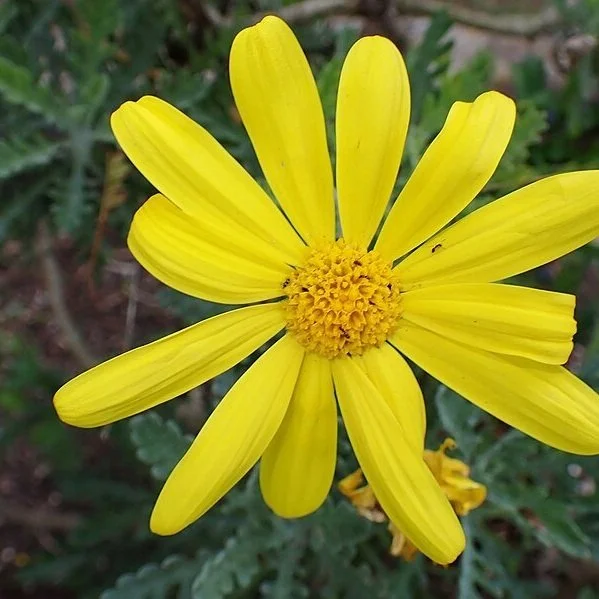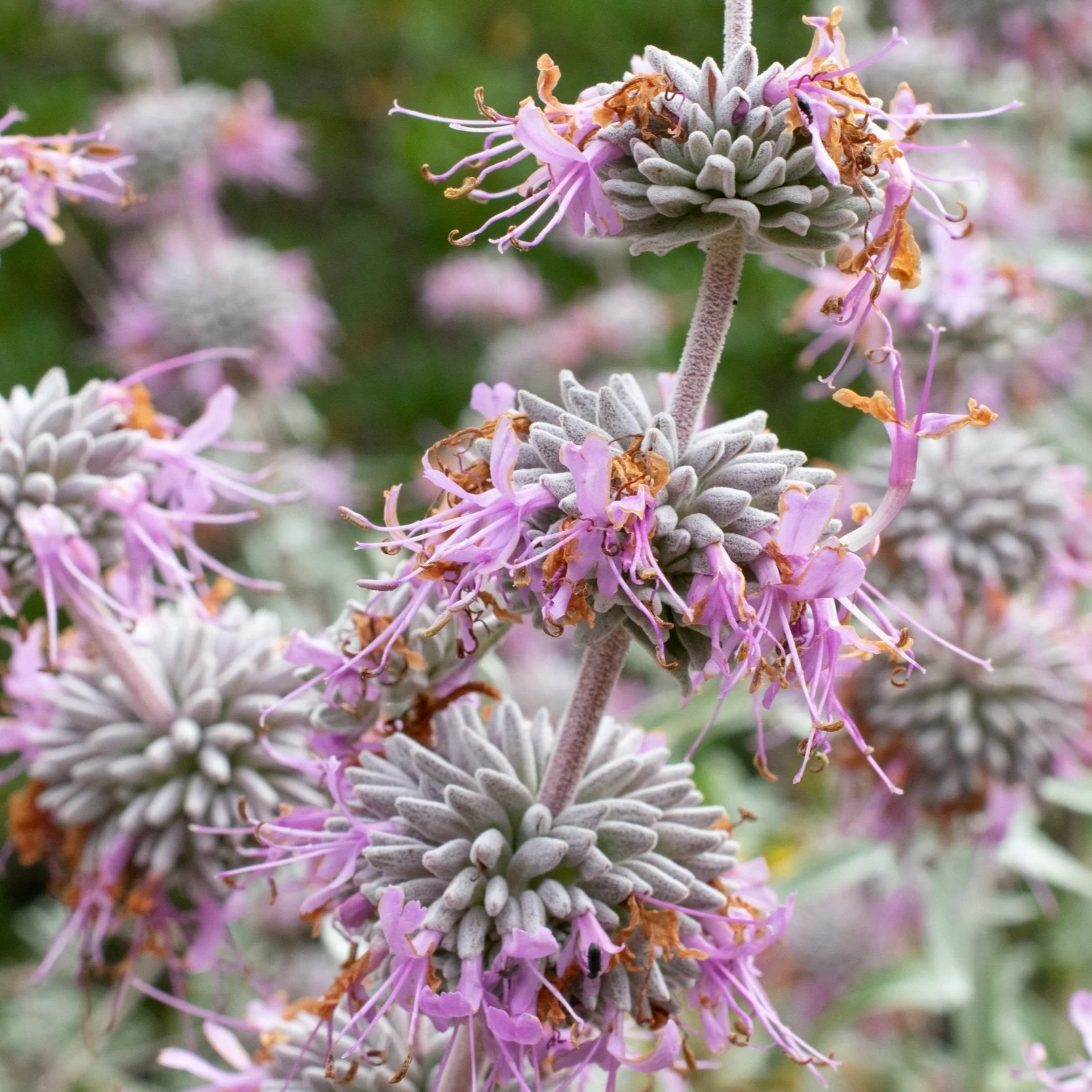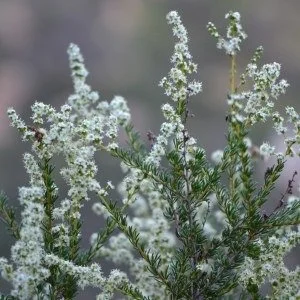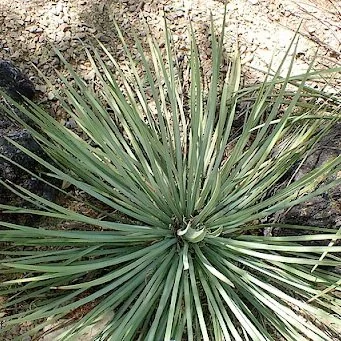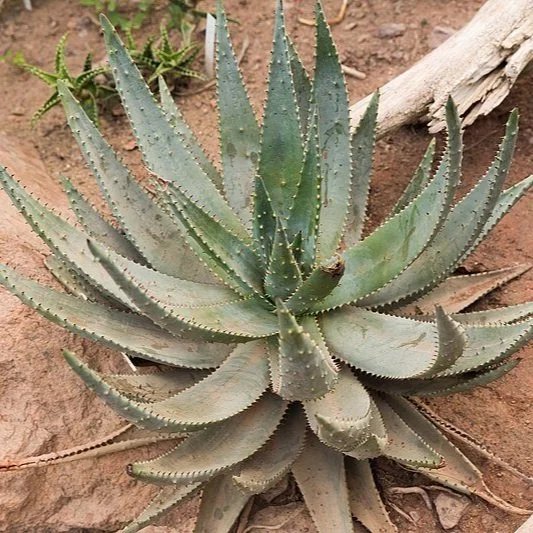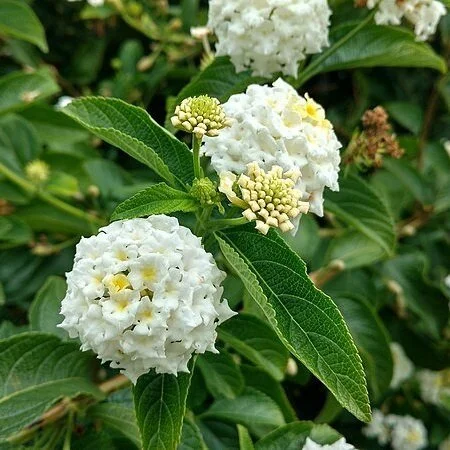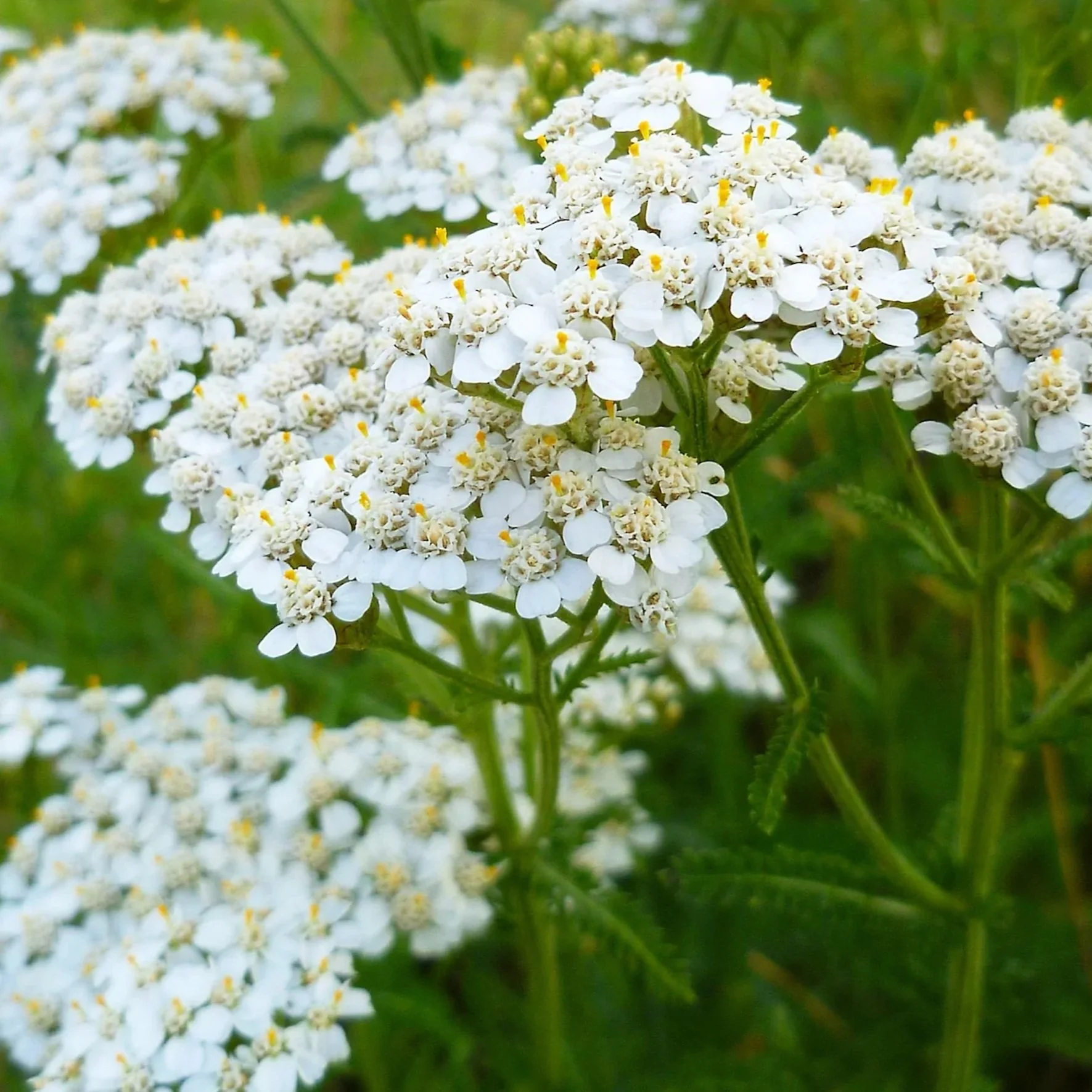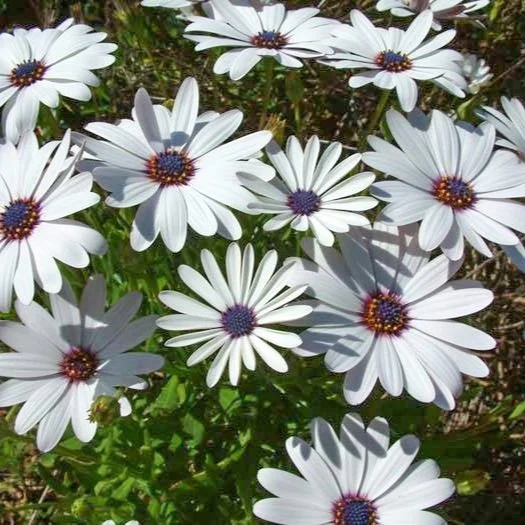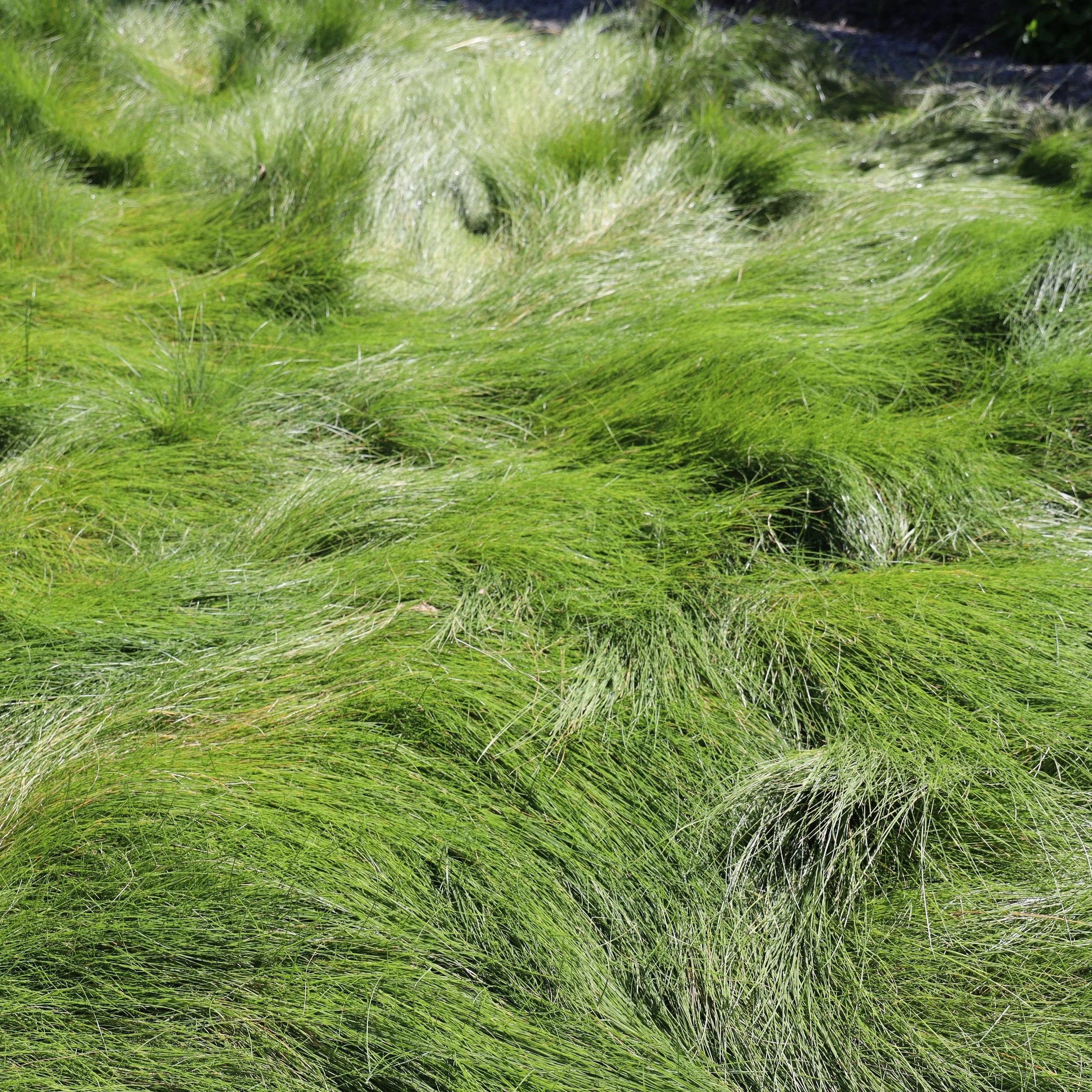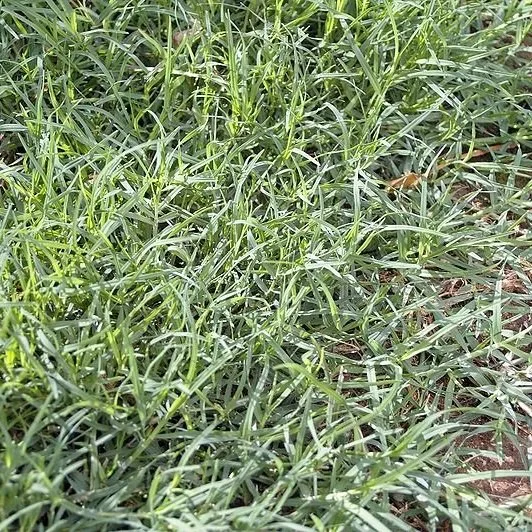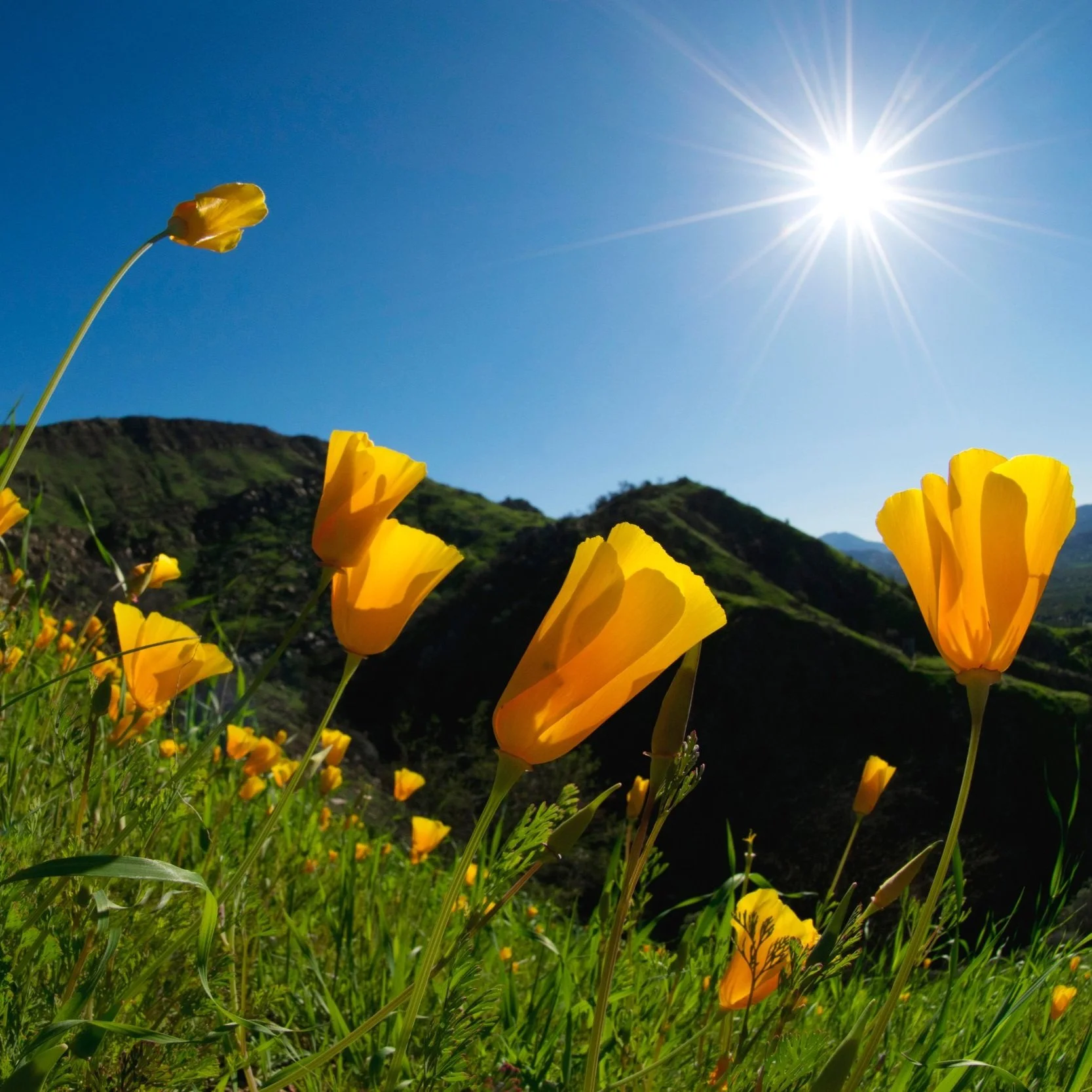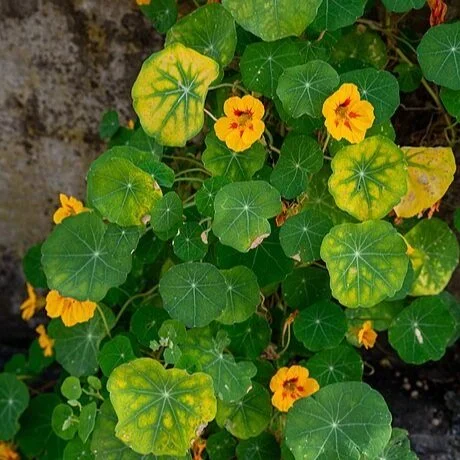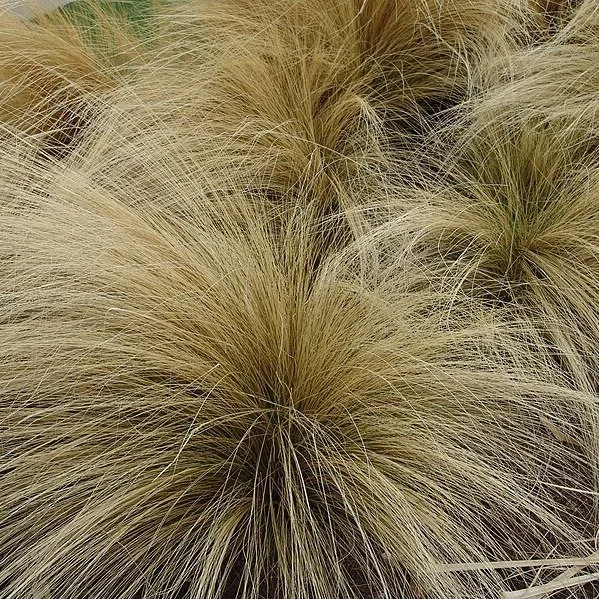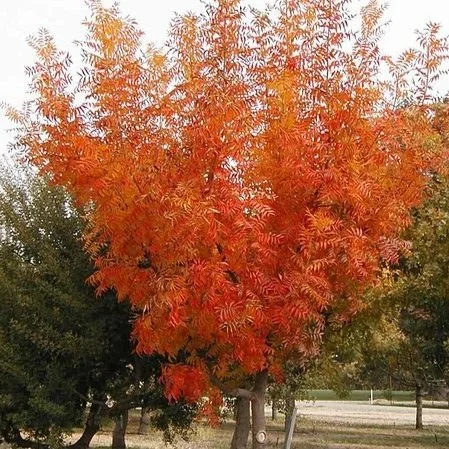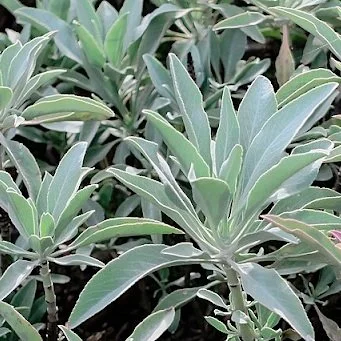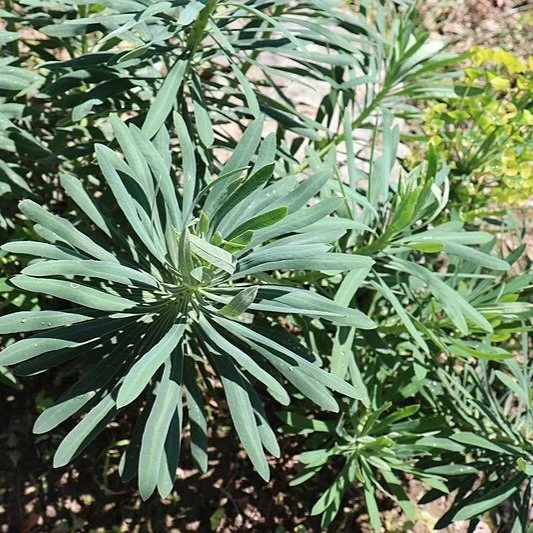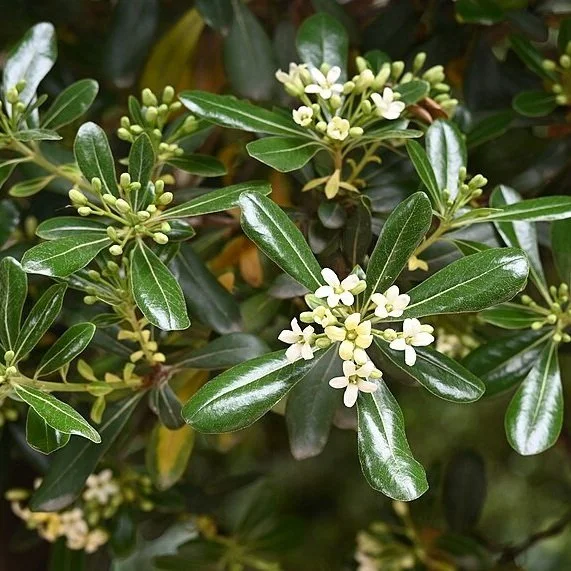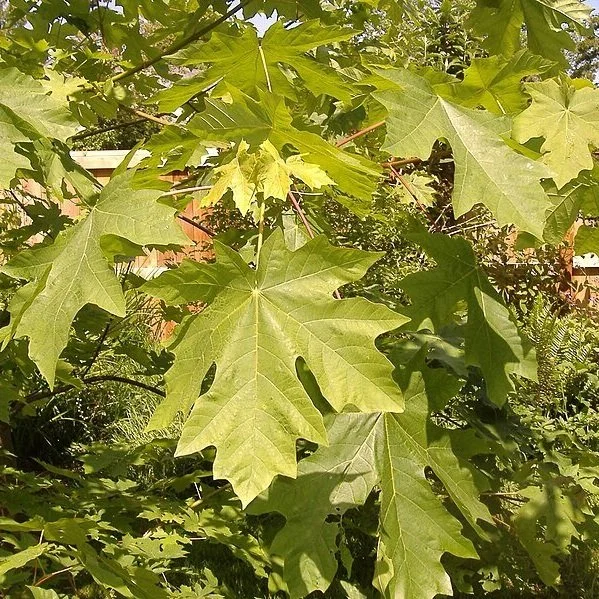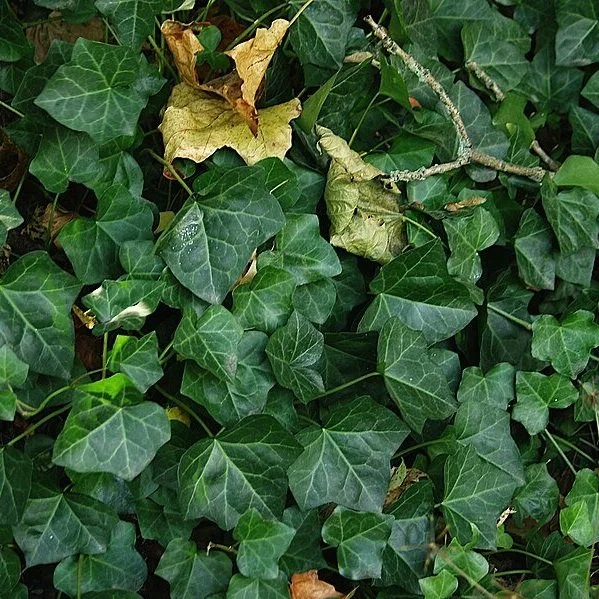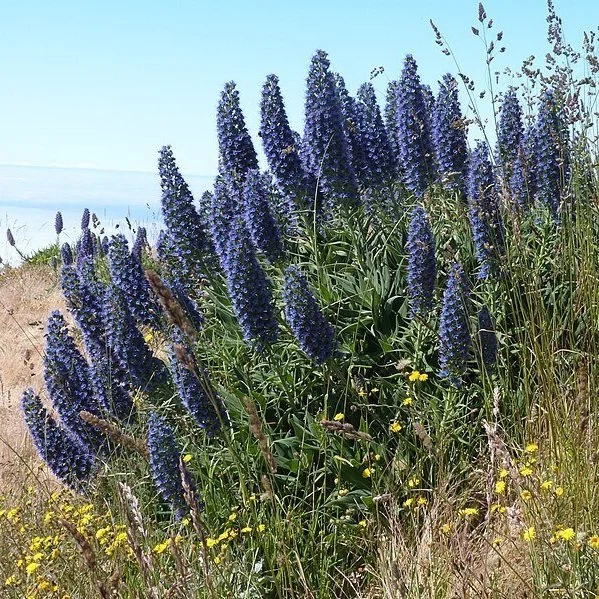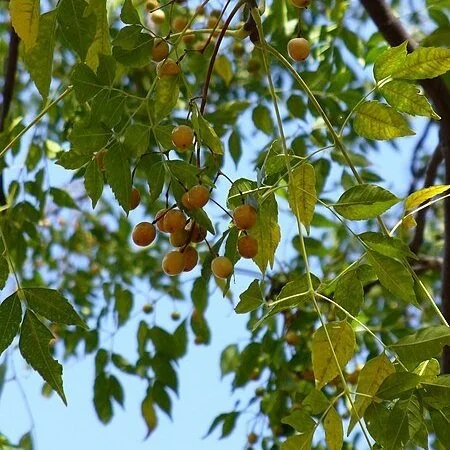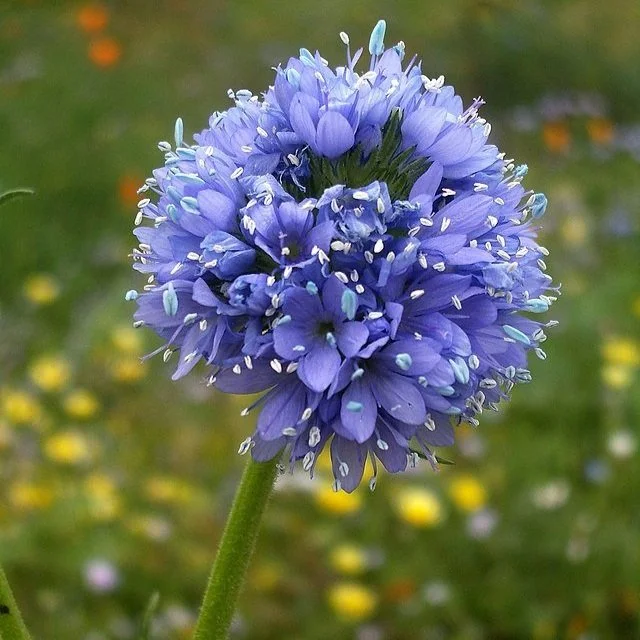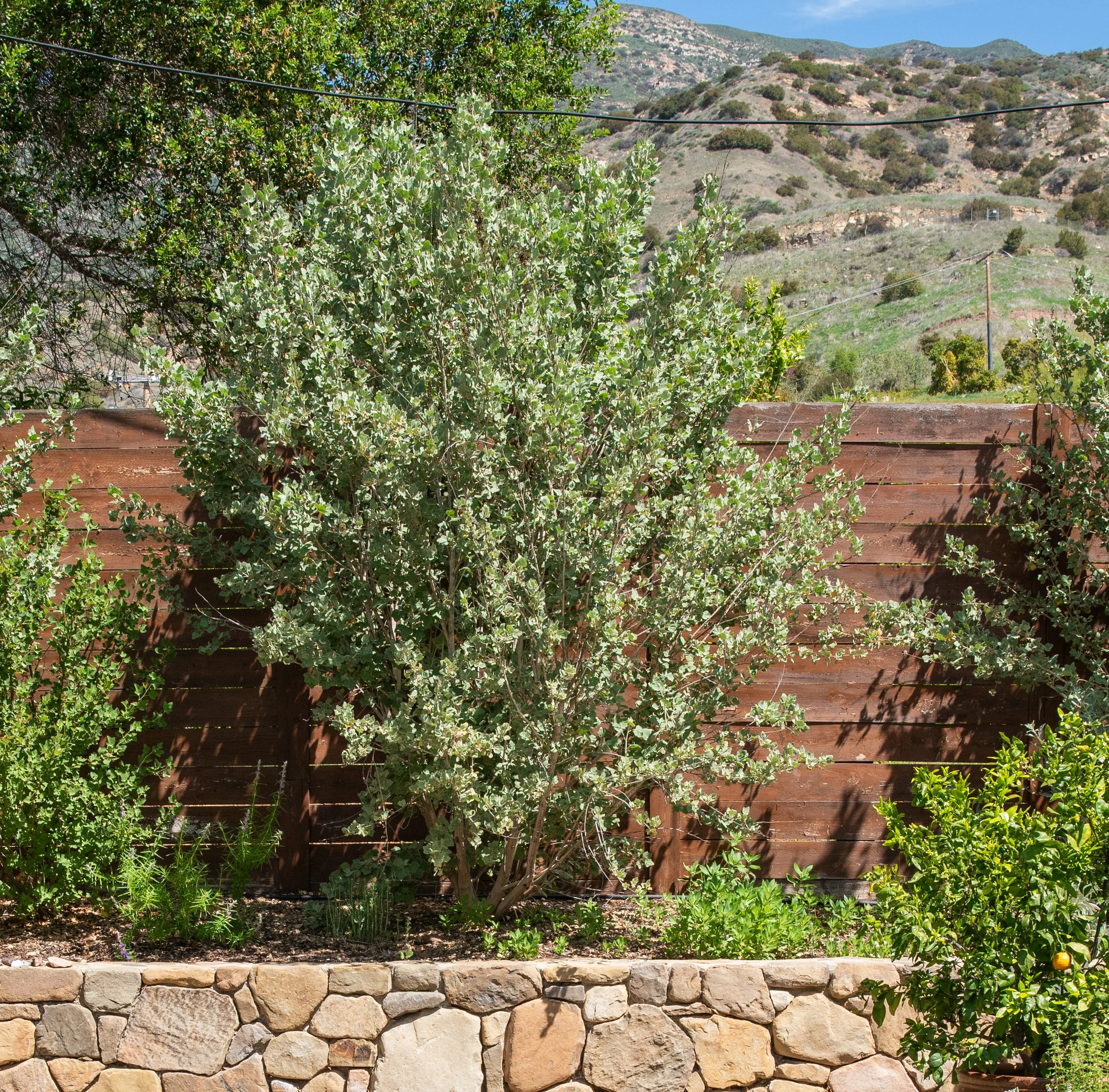
Plant this not that
Ojai’s native plants are specifically adapted to our valley. They support our local pollinators and wildlife and are in-tune with our local weather patterns. Exotic plants and cultivars cannot endure our local conditions or support our native fauna like our native plants. Consider swapping some non-natives for local classics!
Plants with an asterisks (*) next to them are invasive in California. Please consider replacing or removing these species as they are currently damaging ecosystems across the state and pushing out native species.
-
Plant bush sunflower (Encelia californica) NOT bush daisy (Eurypos spp.)
Looking for a bushy, evergreen shrub with sunny yellow flowers that will tolerate full sun and low water? Don’t plant the bush daisy, plant the bush sunflower! Our local bush sunflower is hardy and fast growing. Support a myriad of native pollinators and birds, contribute to our local ecology, and enjoy its beautiful flowers.
-
Plant purple sage (Salvia leucophylla) NOT lavender (Lavandula spp.)
Both plants have ashy grey-green leaves, wonderful purple flowers, and a lovely, perfumy smell. Like lavender, purple sage can be shaped and heavily pruned. Unlike lavender, purple sage supports an incredible number of native species and can thrive on little to no additional water.
-
Hairy ceanothus (Ceanothus oliganthus) NOT cape plumbago (Plumbago auriculata)
Cape plumbago can take a few different shapes, including hedge, shrub, or creeping vine. Hairy ceanothus is a great substitute for cape plumbago as a hedge or shrub, especially in shadier parts of your yard. Its vibrant blue flowers match the plumbago’s vibrancy but exceed it in benefit to local bees and butterflies.
-
Plant chamise (Adenostoma fasciculatum) NOT cypress shrubs (Cupressus spp.)
Similar in texture and color, replace cypress hedges with chamise. An evergreen shrub, chamise is extremely hardy and can be pruned and shaped in the garden. Additionally, chamise produces delicate white flowers in summer, excellent for providing food for local pollinators during a time of scarcity.
-
Plant arroyo willow (Salix lasiolepis) NOT arundo (Arundo donax)
Arundo is arguably the biggest problem species facing our valley today. It invades our creeks, uses our water, damages stormwater infrastructure, and destroys critical habitat for endangered species like red-legged frogs. OVLC is providing free arundo removal services for folks in the Ventura River Watershed. Contact Rhett Walker for more information: rhett@ovlc.org.
Once your arundo is gone, it is important to replace it with native species to prevent other invasions. Arroyo willow is your best option. It provides bank stabilization and is one of our valley’s keystone species, providing food for over 300 native butterflies, moths, and bees as well as habitat for reptiles, amphibians, and mammals. Remove your arundo and plant arroyo willow.
-
Plant honeysuckle (Lonicera subspicata) NOT wisteria (Wisteria spp.)
Wisteria is a common, deciduous climbing vine in Southern California, but it’s not native. If you like its climbing vines and bright, cheery flowers, honeysuckle is a wonderful alternative. It can be trained to climb and produces lovely yellow flowers, perfect for our native hummingbirds. Check out the entryway at Birdsong Ranch for inspiration.
-
Plant deer grass (Muhlebergia rigens) NOT Mexican fountain grass (Pennisetum setaceum)
Mexican fountain grass is an easy-to-grow bunchgrass that provides texture and evergreen color to your garden, but it is highly invasive, taking over our hillsides fast! Plant deer grass instead. This native species provides the same feathery texture and lasting color, but it supports and contributes to local ecology!
-
Plant yucca (Yucca whipplei) NOT aloe vera (Aloe vera)
So, you want a pointy, fleshy plant in the asparagus family? Grows readily and is drought tolerant? Offers occasional, but impressive blooms? Don’t plant aloe, plant yucca!
-
Plant black sage (Salvia mellifera) NOT rosemary (Salvia rosmarinus)
Black sage and rosemary are similar plants, both in the sage family. From their pale purple flowers to their shiny green leaves, this is an easy swap. In addition, black sage is also edible! Though it has a slightly different taste to rosemary, black sage has a delicious flavor. For cooking with black sage, check out the black sage gnocchi recipe in the 2025 Garden Tour Book.
-
California buckwheat (Eriogonum fasciculatum) NOT white lantana (Lantana spp.)
These plants both have charming white blooms and form spreading, low to the ground hedges. Lantana is an invasive species in California, escaping yards and damaging local ecosystems. Unlike white lantana, buckwheat is a powerhouse of supporting native pollinators and thrives in low water conditions.
-
Plant common yarrow (Achillea millefolium) NOT white African daisy (Osteospermum spp.)
Though the flower shape is different, common yarrow will create the same effect, pops of white flowers above the evergreen leaves. Common yarrow supports a host of pollinators and is a hardy, beginner-friendly native plant, while African daisies are invasive in Ventura County!
-
Plant leafy bent grass (Agrostis pallens) NOT Bermudagrass (Cynodon dactylon)
Leafy bent grass makes a great native lawn! Mow-able, durable, and beautiful, this grass is a great alternative to other non-native lawns, like bermudagrass.
-
Plant holly leaf redberry (Rhamnus ilicifolia) NOT common holly (Ilex aquifolium)
Swap holly for holly! Holly leaf redberry produces small cream or yellow flowers and bright red berries, just like the common one. With spiny leaves, you may not even notice a difference, but our local birds will and they will thank you for this delicious snack!
-
Plant California poppy (Eschscholzia californica) not annual nasturtium (Tropaeolum spp.)
Due to its aggressive and hardy nature, nasturtium grows readily in California. For that reason, it is an invasive species. Look no further than our state flower, the California poppy, to replace this invasive plant. California poppy will provide the same low to the ground pop of color, while also providing nectar and pollen for local bees and butterflies.
-
Plant deer grass (Muhlebergia rigens) NOT feather grass (Nassella tenuissima)
Feather grass, like fountain grass, is an easy-to-grow bunchgrass that provides texture and evergreen color to your garden, but it is highly invasive, taking over our hillsides fast! Plant deer grass instead. This native species provides the same feathery texture and lasting color, but it supports and contributes to local ecology!
-
Plant blue-eyed grass (Sisyrinchium bellum) NOT flax lily (Dianella spp.)
Both plants produce delicate purple flowers and blade-like leaves. They thrive in similar conditions and can create a colorful and textured accent in your garden. Unlike the flax lily, blue-eyed grass supports our local pollinators and wildlife.
-
Plant live oak (Quercus agrifolia) NOT pepper tree (Schinus molle)
Pepper trees are invasive and don’t provide for our local wildlife. In contrast, coast live oak, native to Ojai, support nearly 500 wildlife species, providing essential habitat and food for pollinators, birds, and mammals. Replacing pepper trees with coast live oaks helps restore the valley’s ecology and biodiversity.
-
Plant California black walnut (Juglans californica) not chinese pistache (Pistacia chinensis)
Looking for a tree with beautiful fall colors? Plant California black walnut! While Chinese pistache may win on the vibrancy, it is not a match for our native walnut’s ecological benefits. Our local walnut creates food and shelter for a myriad of native species, such as the vestal tiger moth.
-
Plant ceanothus (Ceanothus megacarpus, crassifolius, cuneatus, spinosus, or oliganthus) NOT Crape myrtle (Lagerstroemia spp.)
Recognizable with its flashy spring flowers, both of these trees are popular additions to many gardens. Unlike crape myrtle, ceanothus are keystone species in our valley supporting at least 120 species of butterflies and moths, along with providing pollen and nectar for native birds and shelter for native birds.
Ceanothus are often quite bushy, but can easily be pruned into a typical tree. Check out these resources to learn more about pruning your ceanothus
-
Plant ceanothus (Ceanothus cuneatus or crassifolius) not acacia (Acacia spp.)
Acacia is often planted due to its drought tolerance and beautiful white or yellow flowers, but it is highly invasive and does little to support our native birds, bees, and butterflies. Consider planting hoary leaf or buckbrush ceanothus instead. These two ceanothus will fill that drought-tolerant, floral niche while still contributing to biodiversity in our valley.
Ceanothus are often quite bushy, but can easily be pruned into a typical tree. Check out these resources to learn more about pruning your ceanothus
-
Plant Pacific madrone (Arbutus menziesii) not strawberry tree (Arbutus unedo)
Both in the family Arbutus, these two trees are nearly identical. They have very similar bark, leaves, and edible fruits for humans. The key difference is that madrone can support our local wildlife, providing food and shelter, while strawberry trees provide little for our native species.
-
Plant sycamore (Platanus racemosa) not eucalyptus (Eucalyptus spp.)
Eucalyptus is an invasive species in California. Like many escaped ornamental plants, it thrives in our local environment at the detriment of our native plants and animals. If you have eucalyptus growing in your hard, consider removing it and replacing it with one of our incredible native trees.
If you like the color of eucalyptus, consider planting a sycamore. Our native western sycamore share the lovely, silvery bark color as eucalyptus, but is a benefit to local ecology.
-
Plant oak (Quercus agrifolia or lobata) not eucalyptus (Eucalyptus spp.)
For many, eucalyptus is a nostalgic tree, evoking feelings of old Ojai. But, I ask you to dig a bit further into our valley’s history to when the valley floor was an oak savanna, able to support all of our diverse and beautiful local wildlife. Plant one of our native oaks or replace your eucalyptus today.
Eucalyptus is an invasive species in California. Like many escaped ornamental plants, it thrives in our local environment at the detriment of our native plants and animals. If you have eucalyptus growing in your hard, consider removing it and replacing it with one of our incredible native trees.
Our native valley oaks support, at current count, nearly 500 native species, from bees to butterflies to birds, by providing food and shelter.
-
Plant white sage (Salvia apiana) not Mediterranean spurge (Euphorbia characias)
Both of these shrubs sport ashy blue leaves and stunning inflorescence. Both are drought tolerant and provide a stunning addition to your garden. But, only white sage can support our local native species and contribute to our incredible local biodiversity.
-
Plant buckbrush ceanothus (Ceanothus cuneatus) not Australian laurel (Pittosporum spp.)
Evergreen screening hedge with sweet white flowers? Forget pittosporum! Plant buckbrush instead! Make your hedge an oasis for native birds and pollinators.
-
Plant lemonade berry (Rhus integrifolia) not oleander (Nerium oleander)
Oleander is an incredibly hardy shrub, tolerant of many adverse conditions, including heat and pollution. Despite its hardiness, oleander is quite toxic. Consider lemonade berry as an alternative! Lemonade berry rivals oleander in size and hardiness. It’s tolerant to pruning and also produces beautiful pink flowers. Unlike oleander, lemonade berry is not toxic. It produces tart, but edible berries, great for people and native critters.
-
Plant California buckwheat (Eriogonum fasciculatum) not Australian laurel (Pittosporum spp.)
For small or prostrate laurel, substitute California buckwheat. Both are low lying shrubs with delicate white flowers, but our native buckwheat will exceed the laurel in nearly every other way. California buckwheat is an excellent plant: easy for beginners, tolerant of almost any garden conditions, and one of our keystone species, supporting birds, pollinators, and other native fauna.
-
Plant big leaf maple (Acer macrophyllum) not tree-of-heaven (Ailanthus altissima)
Despite its name, the tree-of-heaven is no angel. It is highly invasive in California and is starting to take over yards and creeks in the Ojai Valley. If you have a tree-of-heaven in your yard, please remove it and replace it with one of our native trees.
Big leaf maple is a great alternative to tree-of-heaven. Big leaf maple is also water loving, provides fall colors, and is fast growing, just like the tree-of-hell… excuse me… tree-of-heaven. Make the switch today!
-
Plant giant wildrye (Elymus condensatus) not pampas grass (Cortaderia selloana)
Pampas grass is highly invasive in California. You may notice it is encroaching on our hills, slowly taking over and destroying native ecosystems. Pampas grass is commonly planted as an ornamental due to its showy nature, fast growth, and drought-tolerance. Giant wildrye can do all of those things, but without any destruction and only benefit other local native species.
-
Plant creeping snowberry (Symphoricarpos mollis) not english ivy (Hedera helix)
English ivy takes over… and it’s taking over habitat across California. If you have this invasive plant in your yard, please remove it and replace it with one of our beautiful native plants, such as creeping snowberry. Also, a spreading, low to the ground shrub, snowberry makes a wonderful alternative to ivy by creating the same effect in the garden and supporting native birds and other creatures.
-
Plant purple sage (Salvia leucophylla) not mexican bush sage (Salvia leucantha)
Mexican sage and purple sage both provide evergreen leaves and vibrant purple flowers. They are both drought tolerant and can tolerate pruning. Unlike Mexican sage, purple sage contributes to our local ecology by supporting our native bees, butterflies, and birds.
-
Plant creeping snowberry (Symphoricarpos mollis) not big periwinkle (Vinca major)
Big periwinkle is an inconspicuous spreading shrub, slowly creeping through moist, shady areas and consuming vital habitat for our native species. It is invasive in California and needs to be removed. Consider replacing invasive periwinkle with snowberry. Snowberry is a beautiful native shrub that provides delicate pink flowers and white (inedible to people) berries. It provides important habitat for many native species, especially ground nesting birds.
-
Plant bush lupine (Lupinus albifrons) not pride-of-madeira (Echium candicans)
Pride-of-madeira is a very popular ornamental shrub, prized for colorful displays and drought-tolerance. It is also invasive in California and should be removed from gardens to stop its path of destruction. Plant bush lupine instead! Bush lupine is a gorgeous, evergreen shrub with grey, green leaves and stunning purple flowers (very similar to pride-of-madeira), but there is one key difference. Bush lupine is a benefit to our local ecosystem, not a bane. Rip out your pride-of-madeira and plant bush lupine and support our native bees and butterflies!
-
Plant California hedgenettle (Stachys bullata) not horehound (Marrubium vulgare)
Horehound is another invasive species in California. This plant is often grown for its medicinal value and sweet pink flowers. Considering removing it and replacing it with California hedgenettle. Hedgenettle is also a low growing herb that makes a wonderful, medicinal tea and produces lovely pink flowers in late summer, providing critical pollen and nectar for our native bees and butterflies.
-
Plant hummingbird sage (Salvia spathacea) not ice plant (Carpobrotus edulis)
Ice plant is a highly invasive plant, commonly seen wreaking havoc on California’s coasts. If you have an ice plant in your yard, swap it for hummingbird sage. Like ice plants, hummingbird sage is a spreading, low-to-the-ground perennial. It produces beautiful magenta flowers and has edible leaves. Replace your ice plant today with hummingbird sage and create a rich habitat for native pollinators and birds.
(This recommendation is for the Ojai Valley. If you have an ice plant on the coast, look into some of our local dune species, like fleshy jaumea (Jaumea carnosa)!)
-
Plant California hedgenettle (Stachys bullata) not sweet alyssum (Lobularia martitima)
Sweet alyssum is actually not so sweet. This invasive plant is run rampant through the state of California. Help stop the rampage by removing it from your garden and planting California hedgenettle instead. California hedgenettle produces sweet flowers and creates a low layer in the garden. But, unlike sweet alyssum, California hedgenettle is an important native species in our valley, supporting a myriad of native species.
-
California blackberry (Rubus ursinus) not himalayan blackberry (Rubus armeniacus)
Swap your himalayan blackberries for California ones! Though these plants look remarkably similar and are in the same genus (Rubus), our native blackberry is better able to support our native species and the Himalayan one is invasive in California. Make the swap today!
-
Coast live oak (Quercus agrifolia) not palms (many)
Though palms are often considered a symbol of Southern California, these plants do not natively occur in the Ojai Valley. The Mexican fan palm, in particular, is invasive in Southern California. In addition to being non-native and often invasive, palms are also a huge fire hazard and are often described as giant matchsticks by firefighters. Consider replacing your palms with coast live oaks. Our native oaks support vast numbers of native species (over 500) and are known to serve as ember catches, slowing or even stopping wildfires. Support local ecology and think firewise by planting an oak.
-
Plant California walnut (Juglans californica) not chinaberry tree (Melia azedarach)
Chinaberry tree is often planted as an ornamental, recognizable for its bead-like seeds and fall colors. Beyond being an ecological desert (providing few to no resources for our native animals) and being toxic to humans and pets, Chinaberry tree is also invasive in California. An excellent native alternative to chinaberry tree is California black walnut. Walnuts will provide a similar look and size, with fall colors and seeds. These walnuts are a delicious food for humans and animals. Additionally, its husks can be used to make natural dyes. Replace your chinaberry tree with a walnut today!
-
Globe gilia (Gilia capitata) not pincushion flower (Scabiosa japonica)
Pincushion flower may be cute and unassuming, but it is an invasive species in California. If you love its rounded, blue-ish blooms, consider planting globe gilia instead. This native annual provides beautiful flowers in late winter and spring and food for our native bees and butterflies, making it a great addition to any garden.
-
Plant Chaparral mallow (Malacothamnus nuttallii) not olive (Olea europaea)
Often loved for their distinctive leaf color, olive can be a hard plant to replace. Consider the native Chaparral mallow instead. Though mallow varies in shape to olives, they also have its distinctive olive colored leaves. Additionally, olive is invasive in California. Contribute to your local ecosystem and support native pollinators by planting Chaparral mallow.
-
Plant toyon (Heteromeles arbutifolia) not olive (Olea europaea)
Though olives are a beloved tree, they are in fact invasive in California. Consider planting native toyon instead. Toyon is also an evergreen tree that grows to a similar size. It produces lovely white flowers and bright red berries that are an essential food for many of our native birds as they embark on their winter migration. Replace olives with toyons to support local ecology and native species.
-
Plant toyon (Heteromeles arbutifolia) not olive (Olea europaea)
Though olives are a beloved tree, they are in fact invasive in California. Consider planting native toyon instead. Toyon is also an evergreen tree that grows to a similar size. It produces lovely white flowers and bright red berries that are an essential food for many of our native birds as they embark on their winter migration. Replace olives with toyons to support local ecology and native species.


